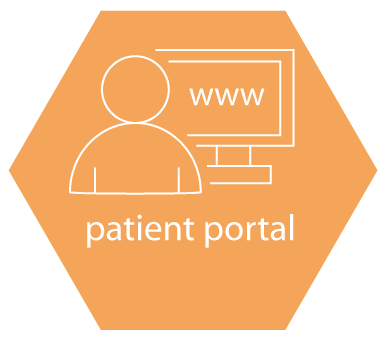
By March and April, COVID-19 resulted in increased messages to clinical staff and a significant increase in the call-to-visit ratio-likely from the drastic decrease of in-person clinic appointments and increased calls to the clinic.Ĭonclusion: Data prior to COVID-19 showed that portal utilization improved through education of medical staff and basic marketing approaches incorporated into the clinical workflow.

Of the planned PDSA cycles, advertising with flyers appeared to have the greatest change.

Patient-to-provider messaging increased 27.3% (from 86.6 to 119 messages/month) and patient-to-clinic messaging increased by 38% (from 104.8 to 170.1). Results: After the first three PDSA cycles, our clinic's average call-to-visit ratio decreased 14% (from 3.37 to 2.89). PDSA #4: The widespread medical and social effects of COVID-19 began to affect our clinic. PDSA #3: Information about enrolling and portal utilization were included at the top of the clinical visit summary document. PDSA #2: Resident physicians were educated in utilizing the portal for communication with patients.
Aim patient portal registration#
PDSA #1: Laminated flyers containing instructions for portal registration were placed at the check-in desk. These data points were plotted on XmR charts to determine significant trends and averages. The monthly number of secure portal messages and patient call-to-visit ratios (total number of calls to the clinic divided by the number of visits) were measured. Three PDSA cycles were planned and implemented, as well as one unexpected PDSA cycle. Methods: To effect and measure changes, the Plan-Do-Study-Act (PDSA) model was used. Specifically, our aim was to increase utilization of portal secure messaging (both patient to provider and patient to clinical staff) by 10% and decrease patient call-to-visit ratio by 10% by June 2020. The clinic averages ~1800 visits per month and receives ~3.3 calls per visit with each call averaging ~10 minutes, resulting in significant use of clinic resources. Our goal for the continued project was to increase the use of secure portal messaging and decrease the patient call-to-visit ratio. Our prior quality improvement initiative successfully improved patient portal enrollment and utilization. Background: The University of Oklahoma-Tulsa Internal Medicine Clinic utilizes an electronic patient portal to improve communication and help achieve the healthcare triple aim of reducing costs, enhancing patient experience, and improving health.


 0 kommentar(er)
0 kommentar(er)
